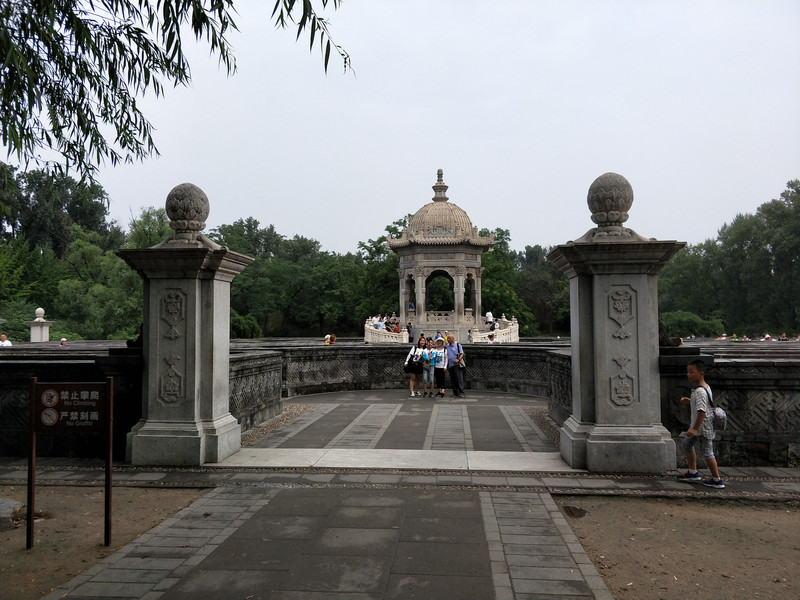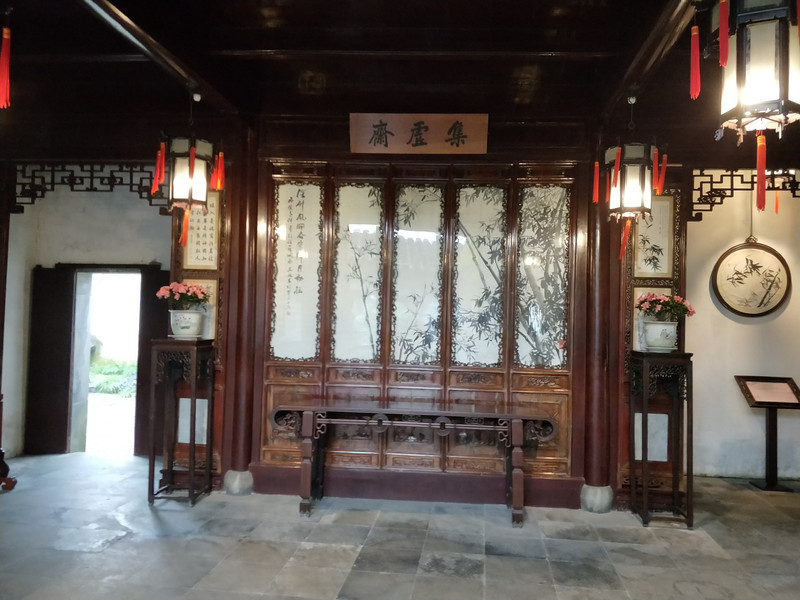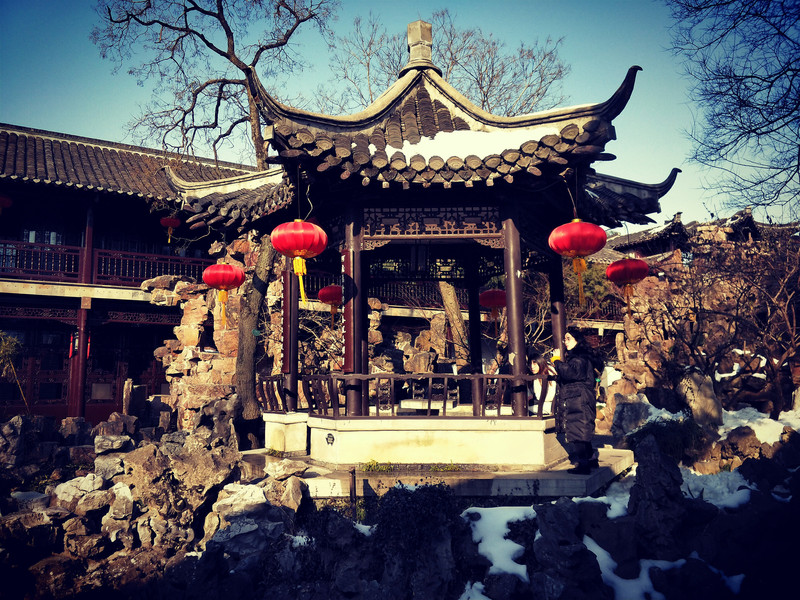How many of China's top ten gardens have you been to?
Chinese classical garden art refers to the form of Chinese landscape gardens represented by private gardens in the south of the Yangtze River and royal gardens in the north. It is universally recognized as the mother of world gardens and an important heritage of human civilization. So which gardens are the best? There are several versions of China's top ten gardens published online, and I think the ones published by China Garden Network are the most authoritative. I have been to all of these ten gardens, and I feel that they are all really good, and each has its own merits.
(1) Yuanmingyuan is one of the famous royal gardens in the Qing Dynasty and is known as the "Garden of Thousands of Gardens". It was built in 1709 and was given land by Kangxi to Yongzheng to build the garden. Emperor Kangxi named it, and later Yongzheng explained it as the meaning of a sage monarch shining light on the world. When Emperor Qianlong ascended the throne, he rebuilt Yuanmingyuan and built Changchun Garden and Qichun Garden, known as the Three Yuanmingyuan Gardens.

Yuanmingyuan was burned down by the Anglo-French coalition forces in 1860. According to rough statistics, about 1.5 million cultural relics were looted. After the founding of the People's Republic of China, the devastated Yuanmingyuan ruins began to be protected and were opened to the public in 1988. They mainly include the ruins of Dashui Law, Xiyang Tower and other buildings.

Qianlong wrote many poems praising Yuanmingyuan, but unfortunately those beautiful scenery are no longer there. Let's read the words of modern scholar Gu Sui! "Linjiangxian·Visiting Yuanmingyuan":"Seeing the Double Ninth Festival passing again, the weather is sunny and sunny. In the evening, cicadas sound swallowed and hugged Liang Ke. Flying geese go away in the long days, what is the autumn of the world? Luoluo has eyes on my soil, and there is a long barren slope under my feet. You can still see the old mountains and rivers when you climb. In autumn, the rivers are thin, and there are few people and many sunset."

(2) The Summer Palace is the largest existing royal garden in China and a world cultural heritage. Beginning in 1750, Qianlong converted four gardens in the western suburbs of Beijing into Qingyi Garden, which was burned down by the British and French coalition forces in 1860. Since 1884, Emperor Guangxu rebuilt the garden and renamed it the Summer Palace. In 1900, it was destroyed by the "Eight-Power Allied Forces" and all its treasures were looted. Restoration in 1902.

The Summer Palace is mainly composed of two parts: Wanshou Mountain and Kunming Lake. There are more than 3000 palace and garden buildings in various forms, which can be roughly divided into three parts: administration, living and sightseeing. The garden is very big and very eye-catching. I have been there three or four times, but I have not visited it, and I have never visited the Xidi area.

Li Dazhao once criticized the construction of the Summer Palace in the name of building a navy and raising huge sums of money to celebrate Cixi's birthday: "The temples are so tall that they connect to the Imperial Capital, and the Afang worked hard that day. Today, I still hear the water on the palace walls, and the sound of running out of the people's cream is this."

(3) Qiyuan, located in Haiyan, Jiaxing, Zhejiang Province, was originally a "Feng's Garden." In 1871, the owner of the garden, Feng Zanzhai built a garden behind the house. He named it Qiyuan, which means "beautiful decorations".

Qiyuan is not large. In terms of gardening style, it combines the strengths of Suzhou, Yangzhou and Hangzhou gardens. It is mainly composed of trees, mountains and ponds, and uses a large area of water to form a layout that is mainly concentrated and supplemented by scattered, with mountains and rivers accompanying each other. The main landscapes include Nine Songs in Tanying, Listening to the Qin in the Valley, Beautiful Mirror, Tanying Pavilion, Xiaoyin Pavilion, etc.

Wu Qi of the Qing Dynasty had the first poem praising Qiyuan,"Manjiang Red·Sheji Qiyuan":"The autumn colors are beautiful, the timing is in front of the maple trees, and the chrysanthemums are behind. Ge Xiyu and Yang Tingsheng were married, and they moved cups to each other. Under the moon, the bed leans against the green trees, and the songs among the flowers add red beans. Ask how to enjoy tonight, and how to enjoy it in the West Garden. It's really not night, but it's as chaotic as day. Blow the jade flute and pass the copper bucket. Ren Luhua mixed wine and dipped it in Luo sleeves. How can fish and birds know about the state affairs of the family? They are in the hands of old heroes. I can point out floating clouds and points to you, what can I do?"

(4) Qinghui Garden is located in Shunde, Foshan, Guangdong. During the Qianlong period of the Qing Dynasty, Long Yingshi, a scholar from Daliang, purchased the former garden site. It was repaired and expanded by several generations of the Long family. It gradually became a scale in 1806. His grandson Long Yuan Ren named it "Qinghui Garden" to symbolize the kindness of his parents shining like the sun shining brightly.

Qinghui Garden is exquisitely constructed and compact in layout. It is a representative work of Lingnan gardens. Not only does it show the elegant and simple style of Lingnan gardens, with gardens in the garden and scenery outside the scenery, but it also has the characteristics of Lingnan architecture and Jiangnan gardens. The main landscapes include Chengyi Pavilion, Bixi Cottage, pool corridor, boat hall, etc.

The poem "Su Longru Wan Qinghui Garden" written by modern poet Li Guang says: "The famous garden returns to the scriptures year after year, and the pines and bangs lead to the vines. In the shadow, the waves in the cold pond are not extreme, and the rain is coming to the dark. Lu Qi went alone to the mysterious snail seal, and the wine seat hung long from the guest star. If you are wandering around with the same light and whisking the dust, you may be listening to a dragon between the walls."

(5) Humble Administrator's Garden, located in Suzhou, Jiangsu Province, is a representative work of classical gardens in the south of the Yangtze River and a model of gardens in the world. Most of the existing buildings in Humble Administrator's Garden were rebuilt in the ninth year of Xianfeng (1850). By the end of the Qing Dynasty, three relatively independent small gardens were formed in the east, middle and west, each with its own characteristics.

The whole park is centered on water, surrounded by mountains and rivers, exquisite halls and pavilions, lush flowers and trees, and has a strong characteristic of a local water town in the south of the Yangtze River. The east garden is open and sparse, the middle garden is the essence of the whole garden, and the west garden is beautifully built. The main attractions include Jianshanlou, Tingyuxuan, Xiaofeihong, etc.

Wang Chang of the Qing Dynasty,"Jiang Shaochu's Gathering of Zhao Yunsong Rhyme in the Humble Administrator's Garden", says: "Clear clouds and light rain spread across the building platform, and three-path zither bottles bloom next to the water. The flowers and trees are still as old as a century ago, and the two birds of the Jianghu come together. There is still a collection of fragrant carriages for spring, and I will teach Jian Xin the talent to see Yushu trees. I even like Jiahe's poetry and painting guests, wandering together at the north window and feet."

(6) Wangshi Garden, located in Suzhou, Jiangsu Province, was built during the Chunxi period of the Southern Song Dynasty (AD 1174-1189) and was restored and expanded in the late years of Qianlong of the Qing Dynasty. "Wangshi" and the original name "Yuyin" both mean retiring from the Jianghu, and is also homophonic with the original name "Wang Si".

The Master of Nets Garden is a typical private garden in Suzhou that combines a house and garden. Its total area is less than one-sixth of that of Humble Administrator's Garden, but its layout is rigorous, with clear priorities and rich in changes. There are gardens in the garden and scenery outside the scenery. It is exquisite and deep, and the small can see the big, so the few can defeat the many. The main attractions include Dianchun Temple, Wufeng Bookstore, Jixu Zhai, etc.

Modern poet Yan Gujin has a poem written in the Garden of Nets Masters: "The mind is like a wandering dragon, and the pool of Nets Masters is covered with frost. I haven't seen the flowers coming together, and the breeze in the afternoon is old-fashioned and fragrant."

(7) Yu Garden is located in the old city of Shanghai. Pan Yunduan, the governor of Sichuan Province in Jiajing of the Ming Dynasty, built Yu Garden next to his house for nearly 20 years starting in 1559 in order to honor his parents."Yu" means "peace" and "peace and stability." Later, after several wars, the garden was destroyed and the scenery was beyond recognition. Since 1956, Yu Garden has undergone large-scale renovations and opened to the public in September 1961.

Yu Garden is a famous garden that combines the garden art of the Ming and Qing dynasties. Although it is small in area, it has a tortuous layout, including pavilions, terraces, buildings, pavilions, rockery, ponds, etc., with different scenery. Yu Garden has five dragon decorative walls soaked with elves and elegance, as well as winding corridors and flowers and plants of various shapes, which cleverly separate more than 40 landscapes in the garden. The main landscapes include Cuixiu Hall, Taihu Lake Stone Peak, Wanhua Tower, Dianchun Hall, etc.

Modern Lao She wrote a poem "Visiting Yuyuan":"In the spring hall, we worship heroes, but outside the hall, peach blood is as red. Yesterday, the knife danced today, and the east wind really suppressed the west wind."

(8) Ancient Lotus Pond, located in Baoding, Hebei Province, has gone through historical changes in private, official, academy, palace and public gardens. Zhang Rou, King of Runan of the Yuan Dynasty, was built in 1234. It was originally named Xiangxue Garden and called "Ancient Lotus Pond" at the end of the Ming Dynasty. The Lianchi Academy was built in the Qing Dynasty and later transformed into the emperor's palace, reaching its peak. It was burned down by the Eight-Power Allied Forces in 1900 and renovated in 2002.

The water in the north and south ponds of Gulianchi is bounded by the central island and is connected by the east and west canals. The scenery in the garden is small and exquisite, elegant and unique, clever in simplicity, and strange in simplicity. It brings together the essence of ancient architectural and garden styles in north and south China. It is actually the pearl of ancient gardens in northern China and is known as "City Penglai" and "Little West Lake". The main attractions include Gentleman Changsheng Hall, Stone Bridge, Wanjuan Tower, Stele Carvings, etc.

He Dongxu in the Qing Dynasty describes the ancient lotus pond: "The horses and horses in the two alleys chase after the flowers, and the city and gardens turn to trust. Painting the sunset floating in the middle of the river, and the lotus bee garden draws the flying sunset. Remove scattered officials from the steps, pine trees and cranes, and the wind and rain leave the guest pool full of frogs. Who is like a drunken man? If you are happy and happy, you will have your own evil ways."

(9)Jichang Garden is located at the eastern foot of Huishan Mountain in Wuxi, Jiangsu Province, adjacent to Huishan Temple and Huishan Spring (Erquan). Descendants of Qin Guan in the Ming Dynasty used monk houses to create "Fenggu Xingwo", which was later renamed "Fenggu Villa". Qin Yao, the third-generation garden owner, returned from his dismissal from office (1591). He paid tribute to the mountains and rivers and built 20 scenic spots, which was renamed "Jichang Garden" after Wang Xizhi's poem "Jichang Landscape Yin".

Jichang Garden is a representative of the foothills villa garden. Although the park is small, it can take advantage of the mountains and rivers, carefully layout, and cleverly borrow scenery to include the beautiful scenery of Xishan and Huishan, creating endless artistic conception with limited space. The main attractions include Fenggu Xingwo, Linfan Pavilion, Meiren Stone, Bayinjian, etc. Kangxi and Qianlong were very fond of Jichang Garden. Their grandparents and grandchildren visited Jiangnan six times respectively and visited the garden every time.

Tang Baoshu, a poet in the Qing Dynasty, wrote his poem "Summer Travel to Changyuan":"It is better to see the beautiful scenery quietly. Longshan Mountain is high on the ancient forest peaks. The clear spring drops sound like rain, and the ancient trees are cloudy and cold in summer. Moss has a good poetic environment for thousands of years, and the haze is full of joy and birds are singing. The green Ge beside the pool is extremely skillful, and you can sit on the stone railing to cool off and forget the opportunity."

(10) Geyuan, located in Yangzhou, Jiangsu Province, was built by Huang Zhiyun, the Salt Minister of Lianghuai in the Qing Dynasty (1818). Huang Zhiyun believed that bamboo had the style of a gentleman, and because the shape of the three bamboo leaves resembled the word "ge", he named it "Geyuan" after Yuan Mei's sentence of "the moon reflects the bamboo with thousands of characters" in the Qing Dynasty. Su Dongpo once said: "I would rather eat without meat than live without bamboo. No meat will make people thin, and no bamboo will make people vulgar." This is the original intention of the garden owner to name it after bamboo.

In addition to planting green bamboos all over, Geyuan is famous for its stone stacking art. The rockery in the spring, summer, autumn and winter is formed by stacking bamboo shoots, lake stones, yellowstone, and Yi stones. It integrates the rules of gardening with the principles of landscape painting, and is known as the "isolated case in China." The main attractions include Four Seasons Rockery, Baoshan Tower, Qingyi Pavilion, etc.

There is a modern poem by Yu Lv,"With Yi Tong Du Haiyu, Visiting Ge Garden":"Meng Xia looked at the breeze and visited Wananzhu. Thousands of poles gather in a garden, and houses in the garden are desolate. Love bamboo in the past and present, and all leaves are hard to read. Reading bamboo is like reading, the wind turns the leaves quickly. I need to drink with bamboo, but interdependence is called loneliness. Sing a song for you and hold up a cup for you. Bamboo is the master of the garden, and I am the servant of bamboo."

Previous Article:Traveling around the world (1679) Slender West Lake
